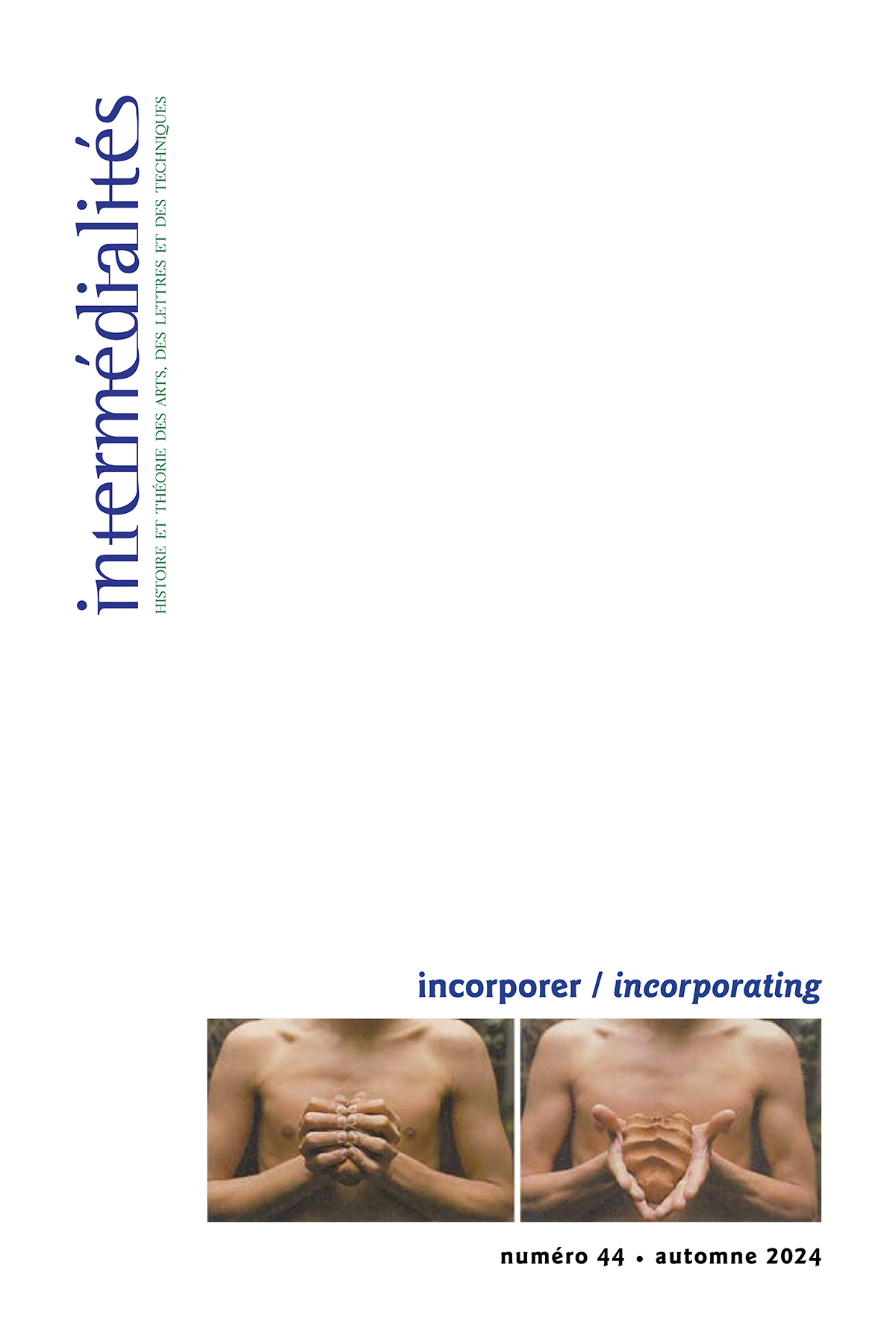In the volume Critical Terms for Media Studies (2010), edited by W. J. T. Mitchell and Mark B. N. Hansen, Bernadette Wegenstein offers a chapter on the “Body” where she reminds us that it is the primary source of all human activity and cultural production. Given that the human being embodies a complex entanglement of biological, ecological, political, social, and cultural characteristics, its body can be analyzed from any of these perspectives. It exists as a biological entity in its fundamental functions and as an ecological entity in its interactions with other organisms and microorganisms. To differentiate between these aspects of the body, social sciences have historically separated it from its material manifestations. The concept of embodiment refers to the temporal and historical form that the body acquires through social elements such as language, rituals, and knowledge. In this sense, the body always incarnates a dual entity: a biological organism and a cultural product, a source of cultural meaning and a biological surplus. For Giulia Colaizzi, “the body is a representation of the body,” a statement that became a critical foundation after post-structuralism and has had fruitful continuations. The body is both the signifier and the meaning. However, this relationship is not an equation but an earthquake. For this reason, Acedo and Torras argue that the body is “an intertextual crossroad,” a site where discourses and paradoxes collide. The body is not a puzzle we can solve to reveal a clear image but an ongoing text to interpret. At the same time, it is the raw flesh with which we act and think. The body is the matter, the medium, and the meaning. Artistic devices can use it as a foundation, a relational element, or a symbol to elaborate. As Bergson argues, the body is the site of our original inscription into the material world through the realms of perception. But how do we come to know the existence of the body in art and culture? Any work of art or cultural object results from the intersection of matter, medium, and meaning, producing a new experience. This also means that the position of the body in the aesthetic realm is not a fixed element but a process. By choosing the verb “to incorporate” for this issue of Intermédialités, we aim to place the body at the center of our reflection, exploring a range of possibilities for studying cultural works from an intermedial perspective. The verb “to incorporate” presupposes, by its etymology, the distinction of at least two material entities, as well as a movement of assimilation or integration of one by the other. This movement further implies the introduction of something external into the body’s internal space. As the body is also a source of innumerable metaphors and images of the human world, it is not surprising that the introduction of one thing into another—even in a metaphorical sense—is also considered an incorporation. “To incorporate” also refers to processes in which one artistic technique is subsumed into another or when two or more media become one. The presence of the body within another medium and the uses of media in relation to the body are incorporated forms of intermedial relations. Incorporation can go as far as homologation, subsumption, partial integration, or total absorption. In the realm of experience, it takes on the sense of appropriating or reappropriating. Like other verbs used in the arts—joining, adding, appending, including, gathering, uniting—incorporating invites critical reflections on intermedial practices and perspectives. During the new millennium, hybridity, which in itself implies a modality of incorporation, has become a characteristic of artistic …
Introduction
…more information
María Andrea Giovine
Universidad Nacional Autónoma de MéxicoSusana González Aktories
Universidad Nacional Autónoma de MéxicoRoberto Cruz Arzabal
Universidad Veracruzana
Access to this article is restricted to subscribers. Only the first 600 words of this article will be displayed.
Access options:
Institutional access. If you are a member of one of Érudit's 1,200 library subscribers or partners (university and college libraries, public libraries, research centers, etc.), you can log in through your library's digital resource portal. If your institution is not a subscriber, you can let them know that you are interested in Érudit and this journal by clicking on the "Access options" button.
Individual access. Some journals offer individual digital subscriptions. Log in if you already have a subscription or click on the “Access options” button for details about individual subscriptions.
As part of Érudit's commitment to open access, only the most recent issues of this journal are restricted. All of its archives can be freely consulted on the platform.
Access options
